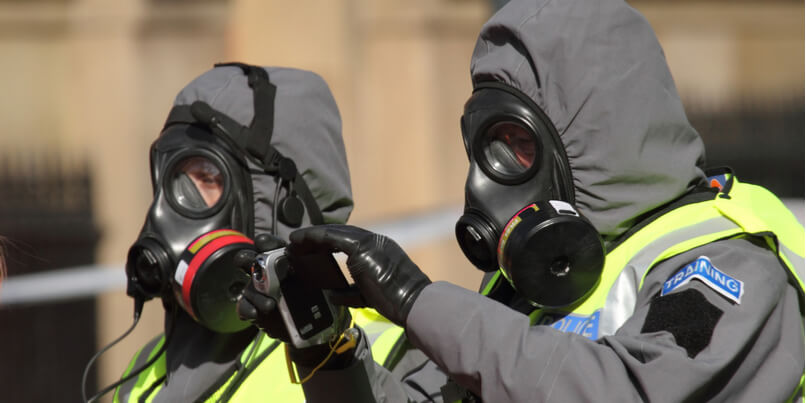 One of the primary goals of chemical warfare agent (CWA) training is the ability to be able to ensure operational readiness in the event of a terrorist related threat or deliberate act of aggression.
One of the primary goals of chemical warfare agent (CWA) training is the ability to be able to ensure operational readiness in the event of a terrorist related threat or deliberate act of aggression.
The challenge though is to provide realistic, hands-on training opportunities that offer the highest degree of authenticity for the trainees while at the same time preventing any risk to the general public, to the environment or to the participants themselves.
So what options exist that enable instructors to create realistic CWA training scenarios which safely and accurately reflect the conditions of incidents in civilian locations?
In this blog post we provide an overview of the traditional approaches to chemical warfare agent training and the role that intelligent, computer-based simulation tools can play in ensuring authenticity.
The objectives of realistic CWA training
The training objectives of a CWA exercise will inevitably go far beyond the ability to obtain a simple reading from a detector.
Advances in both detection requirement and detection technology heighten the need for training experiences that accurately replicate the functionality of the equipment.
Ideally instructors will want to assess their trainees’ abilities in the following key areas:
- That they are appropriately dressed and equipped for their mission
- That they have correctly prepared their instrument for detection of the suspected substance
- That they are able to assess a scene and decide on the best means of approach
- That they can carry out a thorough and methodical search of the location
- That they are able to correctly interpret the readings on their instrument display
- That they can confidently and accurately report their findings to their control point
Traditional approaches to CWA training
Traditional options for CWA training include Live Agent Training (LAT) or Simulant Agent Training (SAT) but, as we will explore, both present logistical issues which can make their use impractical.
For most CWA trainees, the opportunity for LAT is something they're likely to experience very rarely in their career - due largely to safety considerations, logistics of set up, wear and tear of detector equipment and cost.
Similarly, simulant training, while it offers a high level of realism, also presents its own logistical and safety challenges.
So what other options exist for providing realistic CWA training scenarios which can be carried out in a public setting but with zero risk to people or the environment?
One solution undoubtedly lies in the use of intelligent, computer-based simulation tools.
The characteristics of electronic simulation
Electronic simulator detector equipment provides CWA instructors with the means to put together life-like, cost effective and repeatable training exercises that thoroughly test their students’ abilities while at the same time ensuring zero safety risk.
One of the main drivers of using electronic simulators is the ability to be able to detect and monitor an invisible or near invisible hazard as it moves through the air and as it contaminates terrain, infrastructure or equipment.
The simulation source can be easily hidden from view and CWA instructors can very simply control and vary the emission levels.
The source can be configured to represent a wide variety of CW and toxic industrial chemical (TIC) substances within the context of the one exercise.
Multiple devices can also be deployed to represent a range of different substances within the one scenario.
A vital training outcome for CWA instructors is the ability to be able to ensure that the hazard environment is accurately portrayed and that no false lessons are learned.
To this end, electronic simulator detectors come equipped with built in after action review (AAR) which enables a structured review of an exercise and helps to determine that the detector equipment has been operated correctly.
While CWA training using electronic simulators can never fully replace LAT, it is undoubtedly a viable predecessor - and a vital element of ensuring operational readiness for future CWA incidents.





